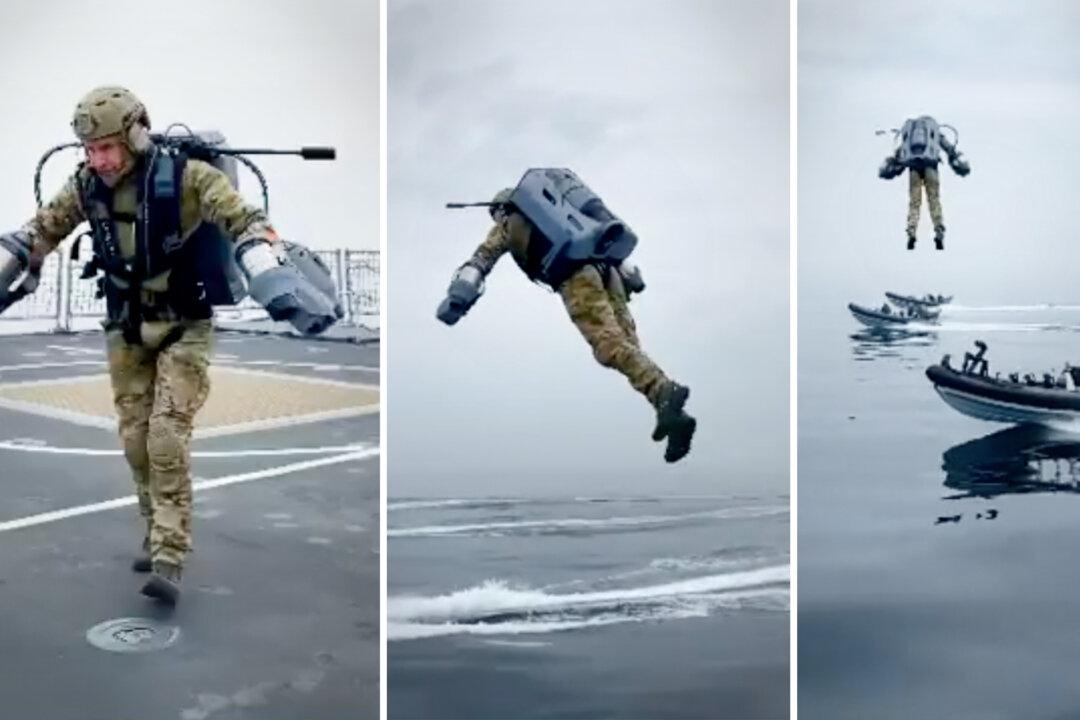Armed with a wild idea and a team willing to help make it reality, a former British Royal Marine has launched an actual flying jet suit that is now being trialed by the Royal Navy. Jaw-dropping footage of a test run at sea shows just how real this technology has become.
Richard Browning, chief test pilot and co-founder of Gravity Industries, told The Epoch Times that his jet suit from Gravity “has been used by the Royal Marines for maritime boarding” and “getting friendly forces onto the deck of a hostage or captured vessel.”





